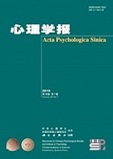|
|
The Staged Construction of Temporal Discounting
HE Jia-Mei,HUANG Xi-Ting,YING Ke-Li,LUO Yang-Mei
2010, 42 (04):
474-484.
Temporal discounting is the psychological phenomenon that the value of future rewards is discounted with time to their receipt. The popular method to investigate temporal discounting is asking subjects to determine the indifferent point, using “choice” or “matching” method under the delay and interval experimental paradigms(Tversky, Sattath, & Slovic, 1988; Read & Roelofsma, 2003).
It is found that as the temporal distance between the event and its reward increases, the subjective value of the reward decreases, and the discounted speed also slow down (Green & Myerson, 1996; Cajueiro, 2006; Rubinstein, 2003). It means the time intervals between sooner and delayed rewards are the same in the two intertemporal choice problems. Most people prefer later rewards in the distant future but prefer sooner rewards when the times of receiving the two delayed rewards approach to the near future, even if the time intervals between the two options were unchanged. It suggests that the temporal background we set for the same time interval is more important than we thought. That is proved by some researches using interval experimental paradigms (Read, 2003; Scholten & Read, 2006). So it’s necessary for us to look into the mental construction of temporal background in temporal discounting, the difference among the differently future distance.
The psychologically mechanistic research of temporal discounting focused on figuring out which area of the brain is associated with immediate and delayed reward (McClure, Laibson, Loewenstein, & Cohen, 2004; Wittmann, Leland, & Paulus, 2007; Berns, Laibson, & Loewnstein, 2007; Sanfey, Loewenstein, McClure, & Cohen, 2006), however, these researches didn’t reach to the evaluation of reward which occurs in differently future distance.
The previous research found that the mental future time can be sectioned into three parts, and the psychological construction of future time is staged (Huang, 1994). Therefore, it is reasonable to predict that the psychological construction of temporal discounting is also staged.
Using the unit area under curve of the temporal discounting ratio as the main indicator to display how fast the subjective value of rewards changes as delay time, three experiments and one questionnaire survey were designed to discuss the staged construction of temporal discounting, selecting college students and teachers from primary and middle schools as subjects respectively. College students were asked to answer the questionnaire concerned with why they had such choice between different amounts of reward received at differently delay time. The result demonstrated that subjects thought about temporal discounting based upon the expectancy of their own future life. The delay time is divided into three stages in mental construction: because of loss aversion and risk seeking, subjects are willing to have short wait for the rewards which will be received within two weeks. Even if the range which the rewards will be received is from future two weeks to future ten years, focusing on requirement and risk, they are also willing to have long wait under the compensatory strategy. But because of risk aversion, they are not willing to wait for the rewards which will be received in the range from future ten years to future fifty years. In the three stages it is found the second stage in temporal discounting is more impressionable to several factors, like methods to determine the indifferent point, the experimental paradigms and the source of subjects.
Related Articles |
Metrics
|




